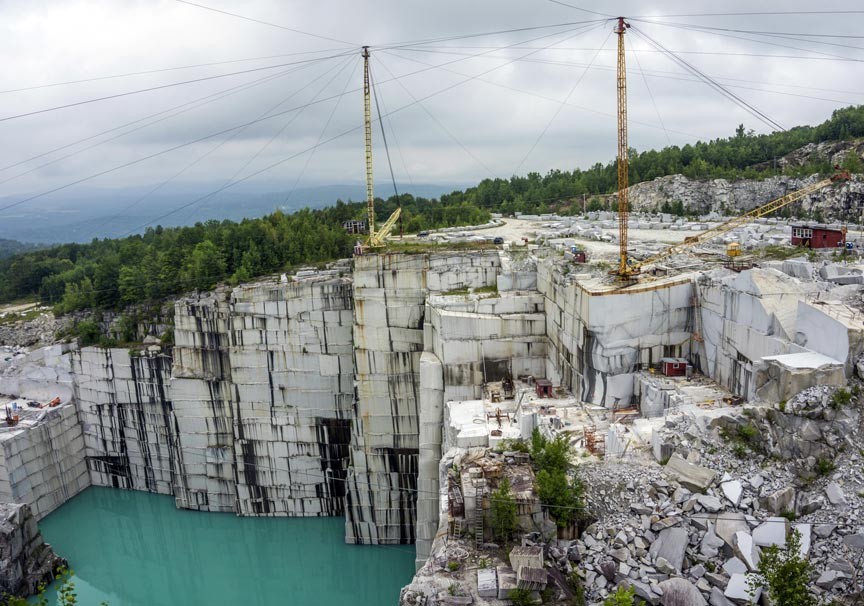Revealing the Mysteries of Granite Quarrying: Where Toughness and Elegance Meet
The world of granite quarrying is a realm where the raw stamina of nature merges with human artistry to create structures that stand the test of time with an air of sophistication. From the midsts of quarries to the meticulous polishing in workshops, the process of transforming granite into building wonders is an intricate dancing of practice and innovation. As we peer into the depths of this ancient craft, we begin to discover the concealed details that form the really significance of our constructed environment.
The Origins of Granite Quarrying
In the record of architectural history, the origins of granite quarrying are shrouded in a tapestry of ancient craftsmanship and geological marvels. Dating back to old Egypt and Mesopotamia, the removal of granite from quarries noted the start of a trip that would at some point bring about the production of several of the globe's most famous frameworks.
Granite quarrying's roots can be traced to the experienced artisans who recognized the rock's longevity and visual allure. With a combination of primitive tools and sheer resolution, these very early quarry employees discovered granite blocks that would become the foundation of human beings.
As people progressed, so did the methods of quarrying granite. The Romans, renowned for their engineering expertise, created sophisticated methods for extracting granite to create monuments, temples, and roadways that stood the examination of time.
The legacy of these old quarrying methods continues to shape modern-day design, with granite remaining an icon of stamina and beauty in construction jobs around the globe. (granite quarries in south africa)
Devices of the Quarrying Trade
The evolution of granite quarrying strategies from ancient human beings to contemporary times highlights the crucial duty played by the devices of the quarrying trade in forming the industry's techniques. In ancient times, quarrying devices were simple, frequently including chisels, hammers, and wedges made from products like bronze or iron. These tools called for significant workforce and time to extract granite obstructs from quarries.

Furthermore, the introduction of pneumatic tools and high-powered machinery has actually dramatically lowered the physical labor called for in quarrying procedures, improving worker security and productivity. As the quarrying industry remains to introduce, the devices of the trade remain at the forefront of driving progress and navigate to these guys shaping the future of granite removal.
Removing Blocks of Granite
Utilizing accuracy machinery and progressed methods, the removal of granite blocks from quarries has actually ended up being a sophisticated process in the modern quarrying market. Controlled blowing up strategies are then used to break apart the granite right into manageable areas.

Sprucing Up and Completing Techniques
To attain a perfect surface on granite blocks, proficient artisans use a series of meticulous sprucing up and finishing strategies. After the preliminary removal and shaping procedures, the granite blocks undertake a complete polishing stage to enhance their all-natural beauty and toughness. One common approach used in brightening granite is ruby abrasion, where industrial rubies are used to grind and polish the rock to a smooth finish. This procedure not just produces a glossy surface however additionally guarantees harmony in color and structure throughout the granite block.
In addition to sprucing up, ending up strategies are related to further fine-tune the granite's look. These strategies might include flaming, developing, or brushing, each offering special appearances and coatings to suit different aesthetic preferences. Flaming, as an example, includes subjecting the granite surface area to high temperature levels to develop a harsh, textured coating, suitable for outdoor applications where see this site slip-resistance is crucial. Sharpening, on the other hand, gives a matte finish that is smooth to the touch, best for indoor kitchen counters and flooring. By meticulously selecting and applying these brightening and finishing methods, craftsmens can transform raw granite blocks into charming pieces that display both toughness and elegance.

Ecological Impact and Sustainability
With the expanding emphasis on ecological awareness in the industry, granite quarrying methods are increasingly inspected for their influence on natural deposits and lasting sustainability. Quarrying for granite can have significant ecological effects. The extraction process typically involves making use of hefty machinery, dynamites, and huge amounts of water, resulting in environment devastation, soil erosion, and water air pollution. In addition, the transportation of granite from quarries to processing facilities creates carbon exhausts, further contributing to environmental deterioration. granite look at more info quarries in south africa.
To minimize these influences and ensure sustainability in granite quarrying, industry stakeholders are adopting various measures. Executing sophisticated innovations to decrease energy consumption and water usage, reclaiming quarried land for ecological restoration, and advertising liable sourcing techniques are some approaches being used. Qualifications such as the Forest Stewardship Council (FSC) and the Leadership in Power and Environmental Layout (LEED) assistance consumers identify eco pleasant granite products.
Final Thought
To conclude, granite quarrying is a procedure that requires specialized devices and techniques to remove blocks of granite and polish them to a high degree of surface. While the ecological effect of quarrying can be substantial, efforts are being made to boost sustainability methods in the sector. Generally, granite quarrying is a fragile balance in between utilizing the toughness and beauty of this all-natural stone while lessening its influence on the atmosphere.